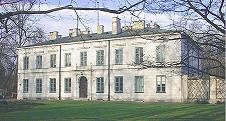Tumskie refleksje
Reflections about Tum
Author(s): Stanisław StawickiSubject(s): Fine Arts / Performing Arts
Published by: Krajowy Ośrodek Badań i Dokumentacji Zabytków
Keywords: Romanesque art in Poland; Łęczyca; arch–collegiate church; portal; Karol Dąbrowski; conservation; reconstruction; restoration; Jan Koszczyc–Witkiewicz; Kalina Stawicka
Summary/Abstract: Leading monuments of Romanesque art in Poland include the former arch–collegiate church in Tum near Łęczyca, which fulfilled important Church and political functions during the feudal disintegration period (twelfth–thirteenth century). In the course of its more than 800 years–long history, the church in question experienced turbulent and dramatic events. Consequently, the only extant element of the former outfitting of the interior is (apart from a Romanesque portal) a badly damaged, but relatively legible mural from 1611, discovered by Karol Dąbrowski in 1952. Already in 1930–1939 the weakened construction of the impressive building — specially the towers situated in the western part of the church — was protected by means of injected cement. During the campaign of 1939 the arch–collegiate church suffered serious damage which, in the opinion of the occupation authorities, qualified the valuable object for complete demolition. The reconstruction and restoration of the Romanesque character of the building, conducted in 1948–1958, were based on a project by Prof. Jan Koszczyc–Witkiewicz. The final, albeit extremely significant stages of this work (the draining of the terrain, the suitable carrying off of rainwater, the introduction of order into the interior, etc.) were never realised, primarily due to deteriorating relations between the communist state and the Church (after 1953) as well as the death of Prof. J. Koszczyc–Witkiewicz (1958). Karol Dąbrowski recorded his research and excavation work in a brief but extremely valuable diary which, together with the fragmentarily preserved conservation diary kept by Kalina Stawicka in 1960, became the basis for a presentation, outlined in this article, of the dramatic facts that took place in Tum several decades ago. The most dangerous events in the postwar history of the collegiate church, affecting both the architecture of the building and the paintings, included the unusually wet summer of 1960, when the expansive and
Journal: Ochrona Zabytków
- Issue Year: 1999
- Issue No: 2
- Page Range: 178-188
- Page Count: 11
- Language: Polish

